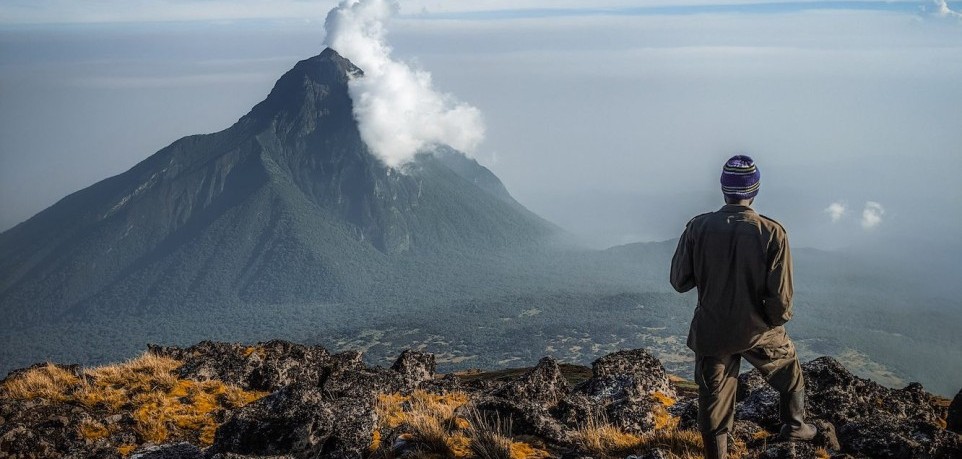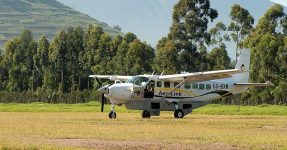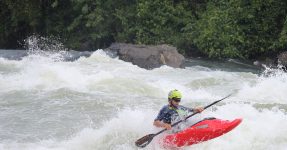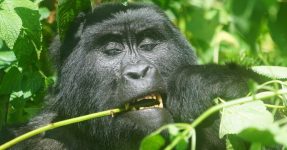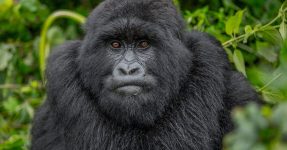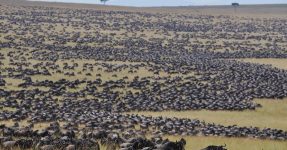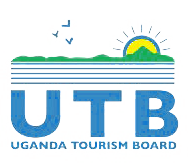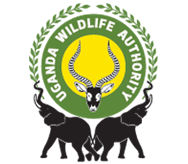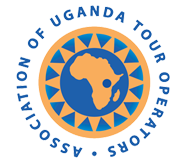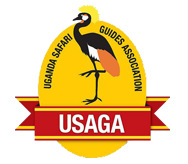Mount. Karisimbi
The fifth-highest mountain in Africa, Mount. Karisimbi is a stratovolcano that rises to a height of 4,507 meters above sea level. It is the highest of the eight major volcanoes in the Virunga area. It stretches along the western arm of the African Rift Valley bordered by the Democratic Republic of the Congo and Rwanda. Karisimbi lavas have been dated between 0.24 Ma to 0.010 Ma, showing how young the volcano is.
The name Karisimbi is derived from the Kinyarwanda word “amasimbi,” which means “white shell” and alludes to the volcano’s frequently observed white-capped summit. Even during the dry seasons, snow still covers the peak. It is surrounded by landmarks like Mikeno in the North, Bisoke in the East, Nyiragongo in the West, and the Great African Rift Valley in the South. The mountain is located in the globally known mountain gorilla home known as Volcanoes National Park.
On its peak, Karisimbi has two craters, the largest of which is called Mutango and the Branca caldera. This mountain can be seen from Uganda, Rwanda, and the Democratic Republic of Congo, making it a tourist destination in all three nations. It provides the region with relief rainfall and the verdant slopes of the mountain serve as grazing grounds for both domestic and wild animals.
On the 27th of September 1908, a trekking group led by Von Egon Krischkstein was attacked by a snow and hail storm while descending the Branca crater, killing 20 porters.
Hiking Mount Karisimbi
One of the main tourist attractions you shouldn’t skip while on your Rwanda safari to Volcanoes National Park is hiking Mt. Karisimbi.
A challenging but extremely rewarding journey, climbing Mt. Karisimbi is typically done in conjunction with gorilla trekking in Volcanoes National Park. The hike begins early in the morning and lasts six hours. It involves traveling through the Bisoke side before arriving at the first rest area at a height of 3,700 meters, where campers can spend the night before continuing their adventure the following day. Consequently, it takes two complete days to reach the summit.
A trek to Karisimbi’s peak is not for the faint of heart because it is located in the primate park of Parc National des Volcans. While you’re at it, you can see a variety of birds and primates, including gorillas and monkeys. The four vegetation belts that run from the thick forest at the bottom to the arid volcanic core at the top are also known for their unusual species.
Due to the high altitude, it might rain at any time of the day hence the trek up the summit is characterized by muddy pathways, particularly during the rainy season. As you trek Mount Karisimbi, you will experience the adage that the temperature decreases as you ascend to higher elevations. Even more freezing temperatures reducing to zero degrees are experienced at night and in the early morning hours. So always carry warm clothing like coats and jackets for this hike.
The top is white-capped due to hail and snow that build in the upper elevations from regular thunderstorms, so you’ll need to be in reasonably excellent health and have some strength to climb through the treacherous slopes to get there. We suggest that you might have to pay an extra porter fee of about $15-20 per day to help you carry the luggage and trekking gear.
Additionally, Dian Fossey’s grave, a well-known American zoologist and conservationist of mountain gorillas, is not far from Karisimbi at the Karisoke Research Center. This indicates that in addition to viewing the mountain gorillas, one gets the opportunity to trek golden monkeys as well as visit the grave, and pay respect to the fallen hero.
When to visit Mount. Karisimbi?
The dry season, from June to August, is the best time to trek Mount Karisimbi since you’ll have clear, gorgeous sceneries and less likely to encounter rain and muddy routes.
From either Rwanda’s Volcanoes National Park or the Democratic Republic of the Congo’s Virunga National Park, one can climb Mount Karisimbi easily.



